



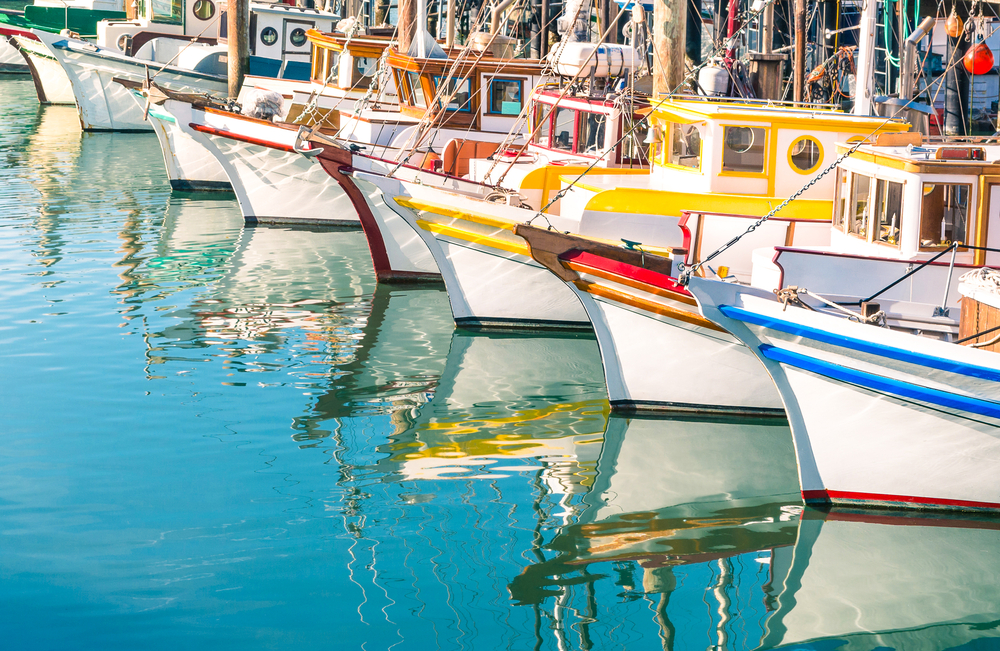
With its year-round gorgeous weather and more than 800 miles of superb coastline, it’s no wonder that California is a boating Mecca. According to a 2002 study by the U.S. Coast Guard, California is the number one boating state, boasting over one million registered boats within its borders. (Fun fact: California contains more boats than South Dakota does people!) Of course, Californians will put their own spin on boating. That’s why more and more Golden State boaters are installing solar panels on their floating castles to improve their life at sea and to protect the fragile ocean beneath their hull.
Are you considering solar panels for your boat? You probably have a lot of questions, like do solar panels make sense for boats? How do they work on boats? Where in the world do they go, and what are the unique challenges of going solar on the open water? In this article, we answer your most pressing solar questions, so you can decide whether to add some solar power to your flagship.
We Californians love our solar panels. Stroll through any subdivision in San Diego, Sacramento, San Francisco, or Oakland, and you’re bound to see the gleam of panels on many rooftops. In fact, our state is crushing on solar panels so hard, California recently announced that most new homes and structures built after 2020 must incorporate solar panels.
How does this solar crush translate to the sea? Does it really make sense to tether a few panels to your boat? The answer, increasingly, is yes. You may have heard horror stories from wizened sailors of rusted or cracked first-gen solar panels that couldn’t even keep a lightbulb on for an hour. However, over the past decade, solar panel technology and manufacturing has improved by leaps and bounds.
These days, solar panels are much cheaper and more powerful. Best of all, they are both sturdy and flexible, allowing them to survive all the pitches and rolls that come with a life on the high seas. As a result of these improvements, more and more sailors are inviting solar on board. What does that actually look like, and how can solar panels power your through the waves
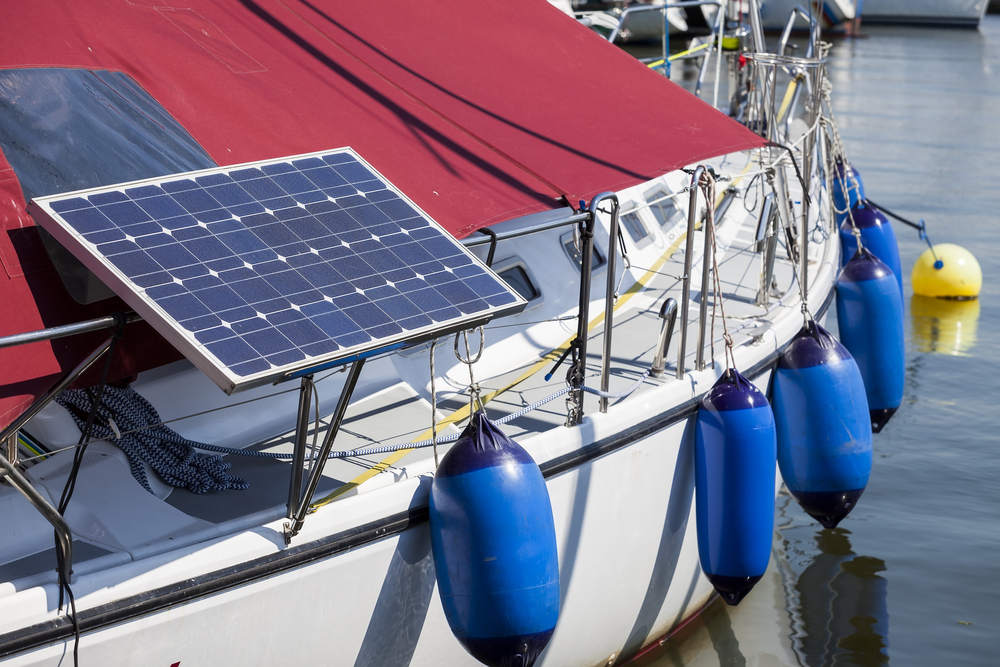
There are two primary ways to utilize solar panels on your boat. The most common (and until recently, only) option is to use solar panels to recharge your ship’s batteries so that you can run all the electronics on your ship without having to periodically turn on your engine.
This is a convenience that lets you charge your tablet, keep your drinks chilled in the fridge, and enjoy lights at night without having to turn on your noisy engine every few hours. Your neighbors in the marina or in the peaceful cove where you’ve dropped anchor will appreciate the extra peace and quiet.
Can this type of setup actually work? According to Emily Fagan, she and her husband Mark relied on solar panels to keep the batteries charged on their 2008 Hunter 44DS named Groovy almost exclusively during a nearly four-year cruise around Mexico. Fagan even recalls that they were forced to rely only on solar power for ten weeks while they waited for an engine alternator replacement. “We had no backup charging system to turn to, and yet we lived and sailed comfortably the entire time,” Fagan writes.
The beauty of rigging solar panels to charge your ship’s batteries is that you don’t need a significant amount of solar power to do the job. Since solar prices have fallen over so much in the last decade, this retrofit is highly affordable for most boaters!
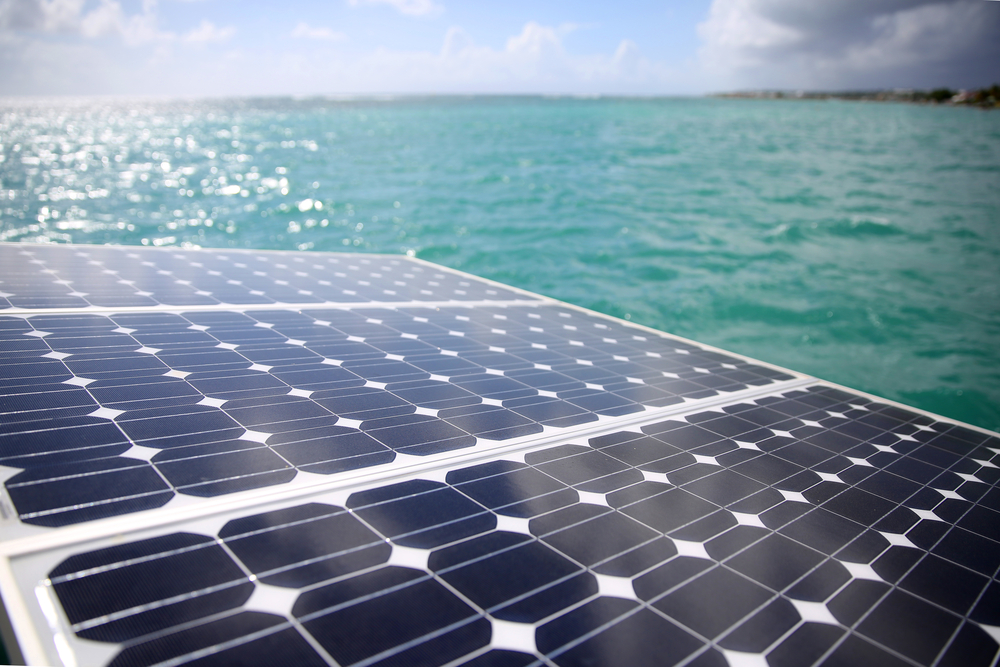
More recently, a small but growing number of sailors have started to sail using solar power. In 2017, Captain Jim Greer completed the “Great Loop,” a 7,200-mile cruise through the Great Lakes, inland rivers, and the Atlantic Ocean, on his 48-foot tri-hull named Ra, using only solar power. (He didn’t even power up at the marinas.)
His boat didn’t exactly break any speed records – he recorded a top speed of 10.7 miles per hour – but he made the entire trip without using a drop of fossil fuels. This was made possible by using solar-charged batteries. Boaters who want to preserve the beautiful oceans and waterways that keep them afloat may now be able to cruise those waters while burning less or even no diesel gas at all!
Whether you want to dip your toe into the solar waters by installing a system that charges your electronics or you’re ready to sail the world using only solar panels, how do you actually incorporate solar panels onto your boat?
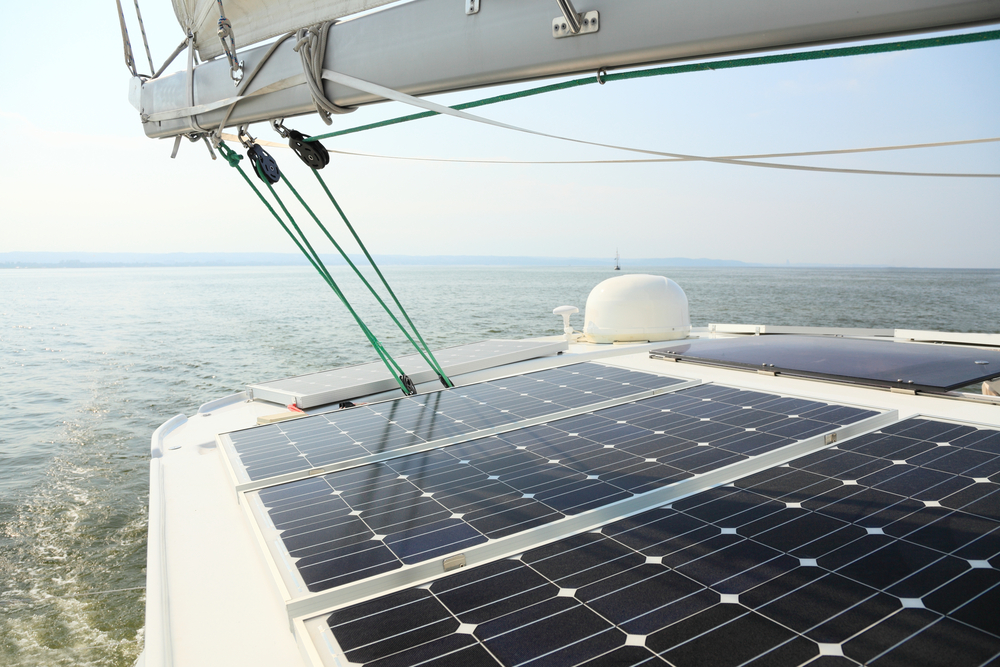
Thinking about adding solar panels to your flagship? Your first step is to decide whether you want the solar panels to power just your electronics or your whole ship. If you’re looking to sail just on solar alone, be ready to invest in a hefty solar power system. You should also be the type of person who loves planning – you’re going to need to keep a close eye on your batteries and make sure you always have enough juice to stay safe!
Like most sailors, you want to start with the smaller goal of using solar to power your on-board electronics, your next step is to calculate your energy needs. That sounds harder than it actually is. Simply determine the energy requirements of each piece of electronic equipment on your ship, including the things you want to regularly charge. For example, you should be able to figure out how many watts your phone requires per charge or how much energy your fridge and freezer take to run for an hour. Next, determine how much you typically use each item. If you just like to take your boat out of the San Diego harbor for half a day on the weekends, you won’t need nearly as much power as you would if you plan to live on your boat full-time, like Emily and Mark Fagan.
Your energy needs will help you determine how many solar panels you’ll need to purchase and what type of panels will be best for your boat.
One of the biggest challenges of incorporating solar panels on a boat is finding the space to install them. Unless you are captaining a luxury yacht, space is likely to be at a premium. While solar panels have gone down in size over the past decade, they still take up space.
The best option for you will depend on the dimensions and layout of your boat. Obviously, the smaller the boat, the more difficult it will likely be to find space for panels. Some sailors have solved this problem by crafting overhead structures or racks on which to place panels. Others have placed solar panels on the sides of the boat, embedded them in the deck, or purchased foldable panels that they can take out and reposition around the ship.
It may be a good idea to work with an experienced solar installation company to determine the best ways to safely and effectively incorporate solar panels onto your boat. This is especially true because where you place the solar panels can dramatically impact how well they perform!
Anything that blocks the sun’s photons from hitting your panels can dramatically lower the energy your panels produce. Besides the unavoidable clouds in the sky, homeowners generally don’t have to worry about bothersome shadows when they have solar panels installed on their rooftops. Boat owners face a more difficult challenge.
Between the mast, sail, spreaders, boom, and the radome, solar panels on a boat often get hit with energy-dampening shadows. To make things even more complicated, the shadows will change depending on the heading and location of your boat, which changes by the second!
When it comes time to install your solar panels, be aware of how shadows could affect your system’s energy production. Try to install the panels in a way that avoids the most drastic shadows and consider purchasing more solar panels to offset any restrictions that may come from unavoidable shadows.
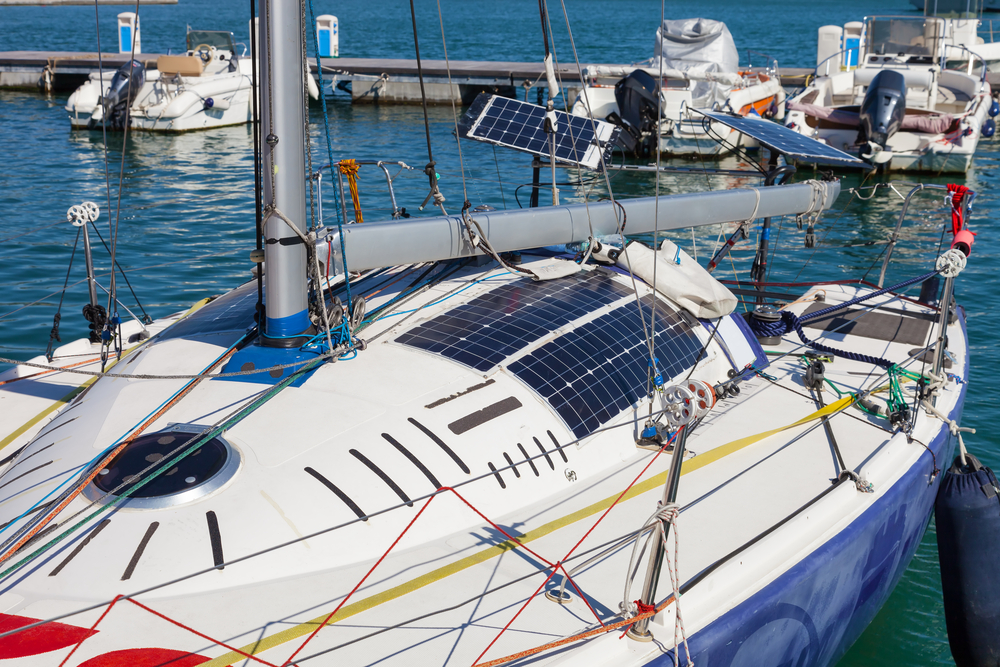
Once you’ve decided to take the solar challenge, you’ve got one more important decision to make. Can you install the solar panels on your own, or should you hire a licensed expert to help? The right answer will be different for each boat owner
Many boat owners pride themselves on their independence and could enjoy the challenge of wiring up their own solar system. Certainly, if you only want to dabble with a smaller system or even start with a portable solar panel setup to recharge a few of your devices each day, you can probably handle the installation yourself.
For larger installations, however, it is usually best to work with an expert team. A licensed solar installer can help you determine which type of solar panel would be ideal for your boat and would hold up best on the open water. An experienced California solar installer may also be able to either build a new structure on your boat to support the solar panels or hire a subcontractor that specializes in this type of work. Most importantly, a solar installer will ensure that your system is designed and installed correctly so that you don’t accidentally damage your boat’s batteries and so that the system doesn’t underperform due to shadows.
If you’d love to drift along a quiet cove without turning on your boat’s engine every few hours to charge your battery, or if you dream of cutting your carbon footprint to protect the ocean and all its amazing inhabitants, contact Semper Solaris. We are a California solar installer that understands the call of the open sea. Let us help you add a little sun to power to your boat. Contact for a free solar consultation today.